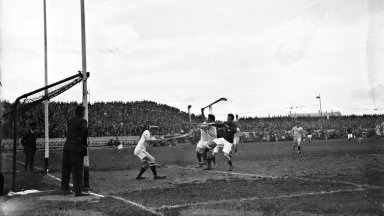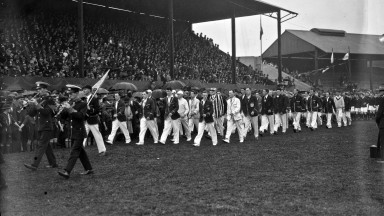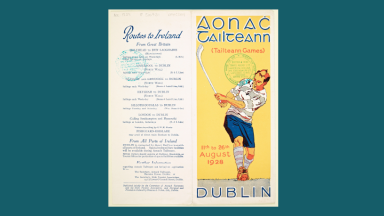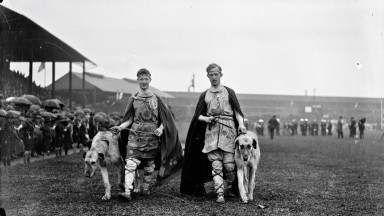More appropriately called an Aonach Tailteann, each of these events was to take its name from the ancient Gaelic festival held in honour of Táilte; a mythological Queen and adoptive mother to Lughaidh Lamhfáda, a ruling deity of pagan Ireland’s Tuatha De Danann pantheon. Celebrated annually alongside the holiday of Lughnasa each year, an Aonach Tailteann was a way in which a High King of Ireland could exert their influence and power by uniting the disparate kingdoms across the island through a truce to participate in the week of competitions, religious ceremonies, and recreation.
Featured sports were said to have included spear-throwing, foot-racing, pole vaulting, slinging and archery, horse racing and more. Craftspeople and professionals such as poets also pitted themselves against each other for acclaim and recognition.
While there is significant dispute surrounding the origins and history of this ancient festival, it is said that the final of these ancient games was held under the High King Rory O’Connor in 1169 AD; the year the first of the Norman expeditions arrived in Ireland, marking the end of an era.

Hurling match, America v Ireland (IND H 0882)
With the Gaelic Revival of the late 19th and early 20th centuries the same interest that energised the revival of Irish sports and language would see aspirations grow for the re-establishment of the Aonach Tailteann as a means of expressing uniquely Irish identity. Maurice Davin and Michael Davitt used the newly founded Gaelic Athletics Association to try and bring this into reality. The attempts of the early GAA to bring the Tailteann Games back into existence would not achieve the necessary fundraising goals, but the GAA would remain a crucial part of the Revolutionary Dáil’s own plans for the emergence of the Aonach.
Planned to be held in 1922, with or without independence being achieved, the state revival of the games would be delayed by the outbreak of the civil war; despite this JJ Walsh, Minister for Posts and Telegraphs, would press ahead with the games in 1924, now to be held at a four year interval just like the also revived Olympic games. Unlike the Olympics however to compete you would have to be Irish or a descendant of the Irish diaspora, though exceptions would be made for notable athletes such as the decathlete Harold Osbourne, swimmer Johnny Weissmuller and boxer Gene Tunney.

Parade of athletes (IND H 2598)
The Tailteann Games were crucial to shaping early international perceptions of a new Irish state, and were pivotal in the early establishment of Ireland’s tourist industry through the invitation of notable foreign dignitaries. The Tailteann Games would also be important in shaping the city of Dublin itself, with Croke Park being allotted £10,000 by the nascent government for the creation of the Hogan Stand in preparation for the stadium being used as the epicentre of the various events.

Aonach Tailteann 1928 Brochure (EPH C204)
However, the cultural importance of the Aonach, as well as its role in establishing the identity of the new state and the associated expenses, would make the celebrations politically controversial, with Fianna Fáil receiving blame for never running the games after 1932 as a blow against the former Cumman na nGaedheal administration.
Things may not be that simple however, and if you would like further information on this cultural institution from the earliest days of the Free State, you are invited to join us here at the National Library on August 2nd 2024 at 1pm when we will be marking the centenary of the 1924 Aonach with a presentation on the mythology, history, people and places that make up the story of the Táilteann Games. We will also explore the relationship they share with the National Library itself.
-----------
By Tadhg MacCionnaith
National Library of Ireland

